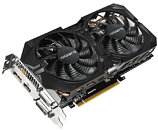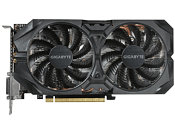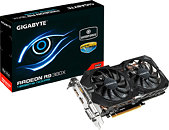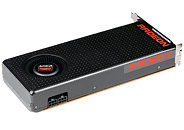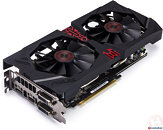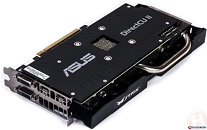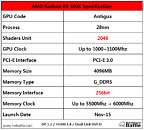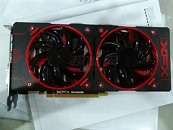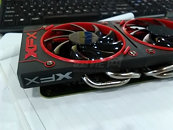
GIGABYTE Unveils Radeon R9 380X WindForce 2X Graphics Card
GIGABYTE started its Radeon R9 380X graphics card lineup with just one model, the R9 380X G1.Gaming (GV-R938XG1 GAMING-4GD). The company now launched its variant, which sticks to AMD reference clock speeds, the R9 380X WindForce 2X (GV-R938XWF2-4GD). Based on a custom-design PCB by GIGABYTE, the card features the company's WindForce 2X cooling solution, which features an aluminium fin-stack heatsink that uses three copper heat pipes to draw heat directly from the GPU die; dissipating it with a pair of 90 mm spinners. The cooler features 0 dBA idle, it completely shuts the fans off when the GPU is idling.
Based on the 28 nm "Antigua" silicon, the Radeon R9 380X features 2,048 stream processors, 128 TMUs, 32 ROPs, and a 256-bit wide GDDR5 memory interface, holding 4 GB of memory. GIGABYTE's card sticks to AMD reference clock speeds of 970 MHz core, and 5.70 GHz (GDDR5-effective) memory. The card draws power from a single 8-pin PCIe power connector. Display outputs include two dual-link DVI, and one each of DisplayPort 1.2a and HDMI 1.4a connectors. The card will be priced at US $230.
Based on the 28 nm "Antigua" silicon, the Radeon R9 380X features 2,048 stream processors, 128 TMUs, 32 ROPs, and a 256-bit wide GDDR5 memory interface, holding 4 GB of memory. GIGABYTE's card sticks to AMD reference clock speeds of 970 MHz core, and 5.70 GHz (GDDR5-effective) memory. The card draws power from a single 8-pin PCIe power connector. Display outputs include two dual-link DVI, and one each of DisplayPort 1.2a and HDMI 1.4a connectors. The card will be priced at US $230.
